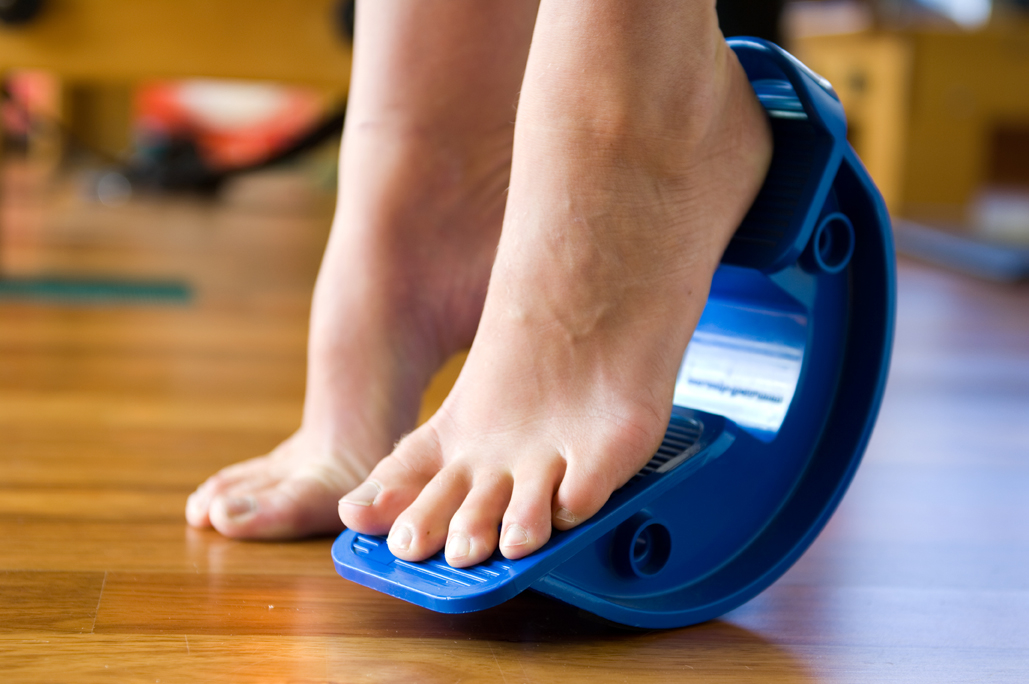Plantar fasciitis and foot pain
Tue,Oct 06, 2015 at 11:28AM by Douglas Wilson
 Plantar fasciitis and foot pain
Plantar fasciitis and foot pain
“It feels like there is a knife under my foot”. Sounds uncomfortable, right? This is one of the symptoms those who suffer from an episode of plantar fasciitis complain of, and as it is the most common form of foot pain presenting to health professions, is likely to be experienced by you or someone you know.
What is plantar fasciitis?
Plantar fasciitis is the term for damage and inflammation to the plantar fascia, a band of connective tissue that runs along the undersole, from the heel (calcaneus) to to ball (metatarsal) of the foot. This connective band usually acts to support the arch of the foot, give support to joints, and provide attachment sites for muscles however when under excessive load can become inflamed and even degenerated, causing pain.
Those who experience plantar fasciitis report pain under the sole of the foot, commonly in front of the heel and along the inner (medial) side. Pain is usually worse in the first few steps in the morning, or activities on the toes, such as going up stairs, tip-toeing etc. Pain in the foot is often associated with movement after rest, and many people can exercise with plantar fasciitis, only experiencing pain once towards the end, or once they have finished. Mild amounts of swelling may be present.
Who gets plantar fasciitis?
// Age, and changes within our body throughout life puts our connective tissue in the feet under greater load. Those in the middle aged population and older have deceased collagen in tissues. This, along with weakening muscles as we age, leads to the plantar fascia having decreased ability to respond to stresses.
// Natural foot structure can also play a role. High arches cause tightness and a shortened plantar fascia whilst flat feet have a decreased ability to absorb shock through the joints of the foot, placing greater load on the fascia.
// Increased load through weight-bearing causes strain through the foot. Circumstances such as being overweight, excessive standing for long periods of time (particularly on hard surfaces or unsupportive shoes), playing sports such as dancing or running that require a lot of springing motions through the legs, can increase this load to an amount to which causes inflammation through the plantar fascia. Weight gain (and subsequent changes in body posture), along with hormonal changes and swelling during pregnancy, means that many pregnant women experience plantar fascia pain during this period of their lives.
What can be done to prevent or treat plantar fasciitis?
As increased stress and loading is the cause of plantar fasciitis there are things within our power that we can modify to prevent or treat the condition. Weight management, wearing supportive shoes that are right for your foot type and activity, as well as avoiding high heels and ballet flats where possible can all assist in reducing foot strain. When training in sports, appropriate training progression, warm-ups and stretches can help, along with adequate hydration can assist in prevention and treatment.
A trip to your physiotherapist and/or GP will be beneficial to correctly diagnose the condition, develop strategies to reduce the stressors in your individual situation along with manual therapy treatment/exercises that can assist to further decrease the load on the plantar fascia and reduce your pain and symptoms. Appropriate pilates exercises can balance any strength issues within the body that is causing increased load in the foot, along with release exercises to reduce the pressure.
In some severe cases injection of cortico-steroid may be of benefit to reduce inflammation and pain, however it is important to note that as this does not address any of the causative factors, recurrence of symptoms may be likely if this is the only form of treatment undertaken. Surgical options may also be discussed in severe cases.
Exercises for plantar fasciitis
Your physiotherapist may prescribe some exercises to alleviate symptoms and prevent recurrence, such as:
// Achilles stretch
// Plantar fascia stretch
// Makarlu releases, see some exemples below
// Isometric gluts on wall with ball


 0
0 